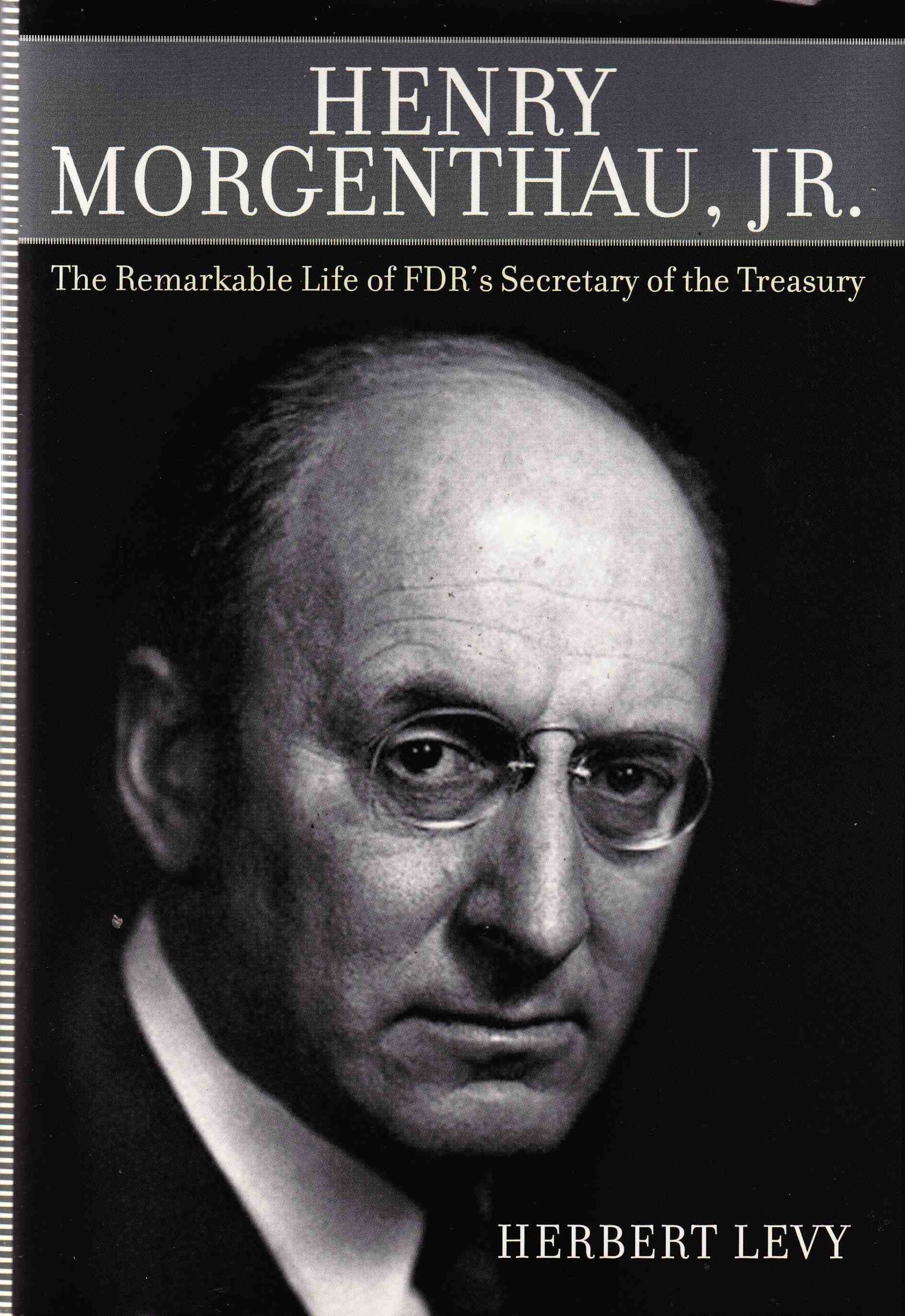By Fred Gardner
Harry Anslinger, the longtime Commissioner of the Federal Bureau of Narcotics, is widely considered the prime mover behind marijuana prohibition. But during the Congressional debate on prohibition in the spring of 1937, Anslinger was just one witness in a strange show trial. He testified that marijuana induces homicidal mania and so forth, but it was not Anslinger who designed the complicated prohibitive-tax strategy. That maneuver was thought up by the Treasury Department’s top lawyer, Herman Oliphant. Nor was Anslinger called back to refute Dr. William Woodward of the American Medical Association, who made many telling points in opposition to the prohibitive-tax bill.
It was Congressman Fred Vinson of Kentucky who dealt with Woodward, subjecting him to a snide, relentless grilling. In the transcript of the hearing, which I recently published to get the hang of ebook production (thinking it would be a simple, finite project), Vinson comes across as an effective prosecutor committed to getting the prohibitive-tax bill enacted, while Anslinger seems like a carnival pitch man —yowza, yowza, yowza. Both men were carrying water for the Treasury Department, which had drafted the prohibition bill and was asking Congress to impose it on the nation.
When the final curtain fell in my imaginary drama, the actual villain seemed to be Vinson, not Anslinger. As I was mulling over the implications, Dave West referred me to his eye-opening essay, “Low, Dishonest Decade,” published in 1999. West, who has a PhD in Plant Breeding and Genetics, spent most of his career as a geneticist/breeder of “corporate maize” (his term). He pioneered the application of molecular markers in crop breeding. He’s a very good writer and an insightful political analyst. Pot partisans ready to escape the single-issue trap should check out his website, www.newheadnews.com.
West disputes the widely held notion that Harry Anslinger pushed through federal prohibition with backing from William Randolph Hearst (whose timber holdings would lose value if hemp could be used for newsprint), the Du Pont Chemical Corporation (whose newly developed nylon would face competition from hemp), and Andrew Mellon, the Du Ponts’ banker, who had been the Republican Secretary of the Treasury (1921-33) and who appointed Anslinger to run the FBN in 1930. West posits a leadership role for Henry Morgenthau, Jr., the Secretary of the Treasury under Roosevelt from 1934 to 1945. (After FDR died, Harry Truman replaced Morgenthau with the above-mentioned Fred Vinson.)
Morgenthau was well aware of the Nazi threat and the strong isolationist sentiment that could keep the Administration from intervening on behalf of European Jews. He was tracking the expanding network of Nazi front groups in this country, and the German-American Bund. There were German-American hemp farmers in contact with Henry Ford, a leading anti-semite. Morgenthau must have suspected, rightly or wrongly, that they were associated with the Bund and wanted to keep tabs on them. As Secretary of the Treasury, Morgenthau was in charge of the Federal Bureau of Narcotics, which had law-enforcement and domestic-surveillance capabilities. Its Commissioner, Harry Anslinger, was an ambitious bureaucrat out to maximize his agency’s power. West’s theory is that Morgenthau orchestrated the federal prohibition and that Anslinger’s railing against marijuana was part of the play.
It makes sense that the boss would be calling the shots. Anslinger himself told David Musto, MD, in 1970 that Morgenthau wanted a ban on marijuana —in response, supposedly, to pressure from law enforcement in a number of states— and gave him the go-ahead. West thinks Morgenthau wanted a ban on the plant for reasons he did not want publicized. The transcript of the Congressional hearing on prohibition shows that it was a Treasury Department production from start to finish.
In a paper on the 1937 Marijuana Tax Act that ran in the Archives of General Psychiatry (and was reprinted by Tod Mikuriya in Marijuana Medical Papers), Musto wrote, “The hearings before the House were held in late April and early May. They were curious events. The Treasury’s presentation to Congress has been adequately described many times, although no retelling has equaled reading the original transcript.” Could there be a better blurb for our ebook?
Circumstantial Evidence in Morgenthau Bio
A biography of Henry Morgenthau, Jr., by Herbert Levy (Skyhorse Publishing, 2010) provides indirect support for Dave West’s hypothesis that Roosevelt’s Secretary of the Treasury was the prime mover behind the federal ban on marijuana.
Morgenthau’s father, Henry Morgenthau, Sr., was a millionaire real estate investor who had backed Woodrow Wilson in 1912 and then became the U.S. Ambassador to Turkey. Henry Sr. bought a thousand-acre spread along the Hudson River which, under Henry Jr.’s management, produced apples and dairy products, but did not make money.
In addition to being a gentleman farmer, Morgenthau, Jr. subsidized a journal called the American Agriculturist. He was a lifelong friend of Franklin Roosevelt’s, and served as the “advance man” when FDR ran for governor of New York in 1928. Morgenthau helped FDR implement policies that benefited New York State farmers, and Roosevelt’s pro-farmer reputation helped him win the presidency in ’32.
One of Levy’s key sources is Morgenthau’s eldest son, Henry the third. (Jewish people, even non-observant ones, traditionally name their children after dead family members, not after their living selves. The Morgenthaus were well-to-do German Jews whose social goal was to assimilate as thoroughly as possible into gentile society. At the end of World War One, Morgenthau, Sr. was sent on a diplomatic mission to Poland in connection with pogroms in the re-emerging republic. When he reached his Warsaw hotel, Levy recounts, “His first act was to establish his American identity in the matter of his breakfast. He announced that he expected to have an American breakfast consisting of juice, cereal, bacon and eggs, and coffee.”)
In the spring of 1932, according to Henry III, “Roosevelt dispatched [my father] on a swing through the Middle West and Southern farm belt to gather opinion on the causes and cures for the agricultural depression and on the Roosevelt candidacy. ‘My trip is going fine,’ he reported to the boss. ‘I am meeting a lot of interesting farm leaders. Most are Republicans but are ready to vote for you, if given the opportunity.’”
Morgenthau aspired to be Secretary of Agriculture but Roosevelt gave that job to one of those erstwhile Republicans Morgenthau had recruited, Henry Wallace of Iowa —a gentile, Levy notes. Morgenthau became head of the Farm Credit Administration. According to historian Arthur Schlesinger, Jr. (who was also from a German-Jewish family seeking to assimilate fully), the FCA in 1933 “refinanced farm mortgages, inaugurated a series of ‘rescue’ loans for second mortgages, developed techniques for persuading creditors to make reasonable settlements, set up local farm debt adjustment committees, and eventually established a system of regional banks to make mortgage, production and marketing loans and to provide credits to cooperatives.”
The United States was still a country of small and medium-sized farms, with 30% of the workforce employed in agriculture. The farmers were suffering because of low commodity prices, some were calling for a “Farmers’ Holiday.”
Lets call a Farmer’s Holiday,
a Holiday let’s hold.
We’ll eat our wheat and ham and eggs,
And let them eat their gold.
FDR’s New Deal undercut the radicals’ momentum with an Agricultural Adjustment Act (AAA) that would pay farmers to take acreage out of production and to destroy large quantities of wheat, cotton, hogs —surplus commodities. It was a quick but temporary and morally questionable fix.
Another way to raise commodity prices was to reduce the gold value of the dollar, which could be achieved by the Treasury Department buying gold at a higher price than was set by statute. Dean Acheson, Acting Secretary of the Treasury, argued vehemently that the Administration did not have the legal right to take the country off the gold standard. According to Schlesinger, “The Attorney General supported Acheson… A few days later Morgenthau showed Roosevelt a longhand memorandum from his general counsel Herman Oliphant suggesting various ways by which the President might buy gold through his executive power… Oliphant, digging into the recesses of his memory, into the recesses of his memory, recalled a Civil War statute which permitted the government to buy gold at changing prices; combined with the Reconstruction Finance Act, this seemed to give the President the power he needed.”
Dean Acheson would resign in high dudgeon. Morgenthau became Secretary of the Treasury on January 1, 1934. Herman Oliphant moved with him to Treasury as general counsel, and would be called on a few years later to devise a cockamamie scheme to outlaw the Cannabis plant.
For farmers, an alternative to taking land out of production and destroying “surplus” commodities would have been to plant crops they could market profitably. Thanks to advances in chemistry, there was at this time a rising “chemurgy” movement that Morgenthau, a farm expert, would certainly have known about. Chemurgy involves growing crops not for food but for transformation into various industrial products —plastics, coatings, thread, etc. As Dave West neatly puts it, chemurgy is based on “the idea that anything you can make from a hydrocarbon you can make from a carbohydrate… Rayon from plants instead of nylon from petroleum.” Henry Ford was a leading proponent of chemurgy. Ford had his workers build a car out of hemp-based products and arranged for a promotional photo of himself, in an overcoat and hat, bashing the rear fender with a sledgehammer to show how strong the material was.
Hemp processing operations in Illinois and Minnesota were launched in the mid-1930s, implementing newly developed technology and with ambitious business plans. Foremost was a company called AmhempCo, organized by an entrepreneur of German descent named Alexander J. Auchterlonie. AmhempCo was blindsided when the Marijuana Tax Act was introduced in Congress, but Auchterlonie immediately hired lawyers and protested —in vain— when it went to the Senate. After the Tax Act passed, hemp expert John Lupien confirms, Anslinger sicced agents on the new hemp companies. Investors pulled out from AmhempCo and a fire of mysterious origin destroyed Auchterlonie’s mill and the huge stack of harvested hemp plants awaiting transformation into cellulose pulp.
Dave West determined that while the new hemp companies were being strangled by federal red tape, the hemp producers of Wisconsin, who had been in business long before the 1930s, were left alone. “Morgenthau wasn’t concerned about hemp,” West concludes. “He was concerned about certain people who were producing hemp.”
West notes that there is no “smoking gun” to prove his thesis about Morgenthau’s key role in the prohibition of marijuana. He wrote “Low, Dishonest Decade” in 1999 and then turned his attention to directing the state of Hawaii’s experimental hemp-growing project. But that’s another story.
Fred Gardner can be reached at editor@os-extra.cannabisclinicians.org




